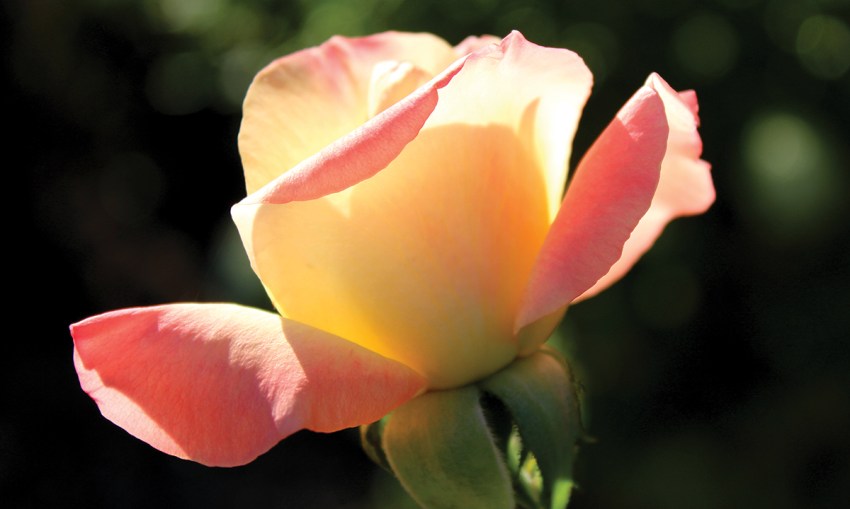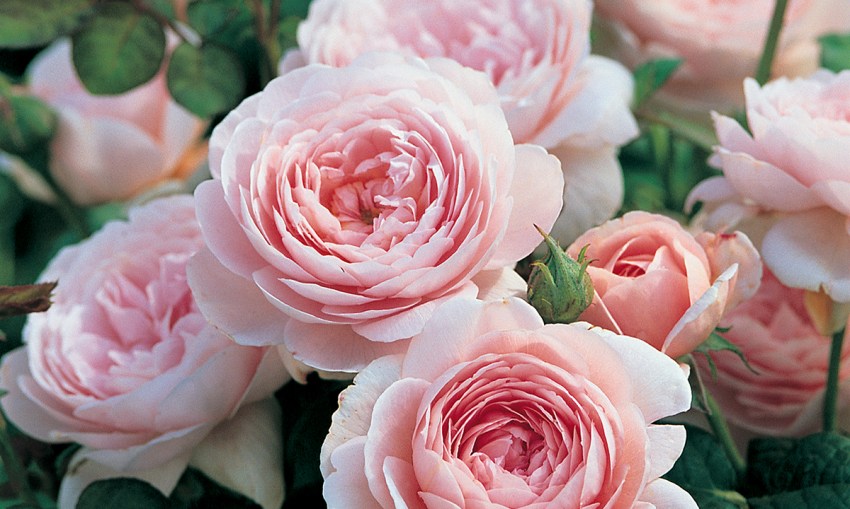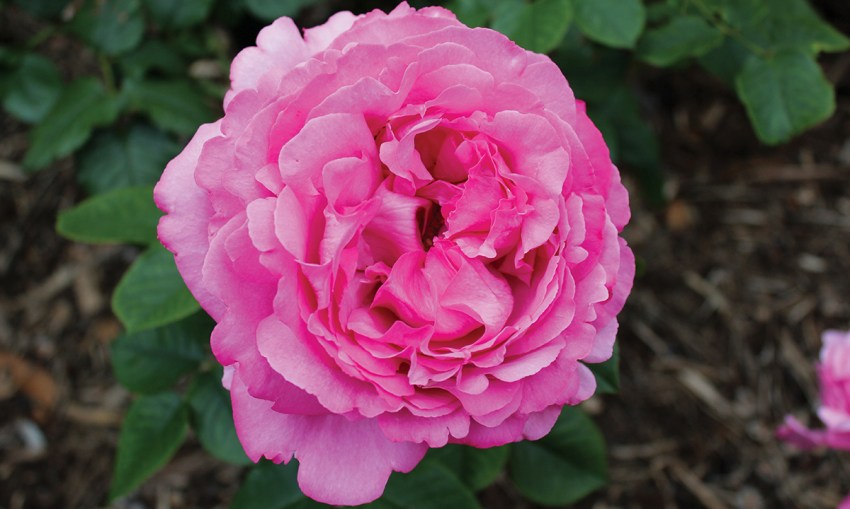SALIFE takes a look at the queen of flowers – the rose – and the royal names that are often attached to them.
Many rose-lovers believe roses are the royalty of any garden … after all they are the world’s most popular flowers with their repeat flowering, regal appearance and wonderful fragrances. And there are many interesting stories about rose varieties that have royal connections; beautiful roses, some old and some new, with their own elusive qualities and unique stories.
Rose varieties over the years have been named to honour kings and queens, princes and princesses, royal occasions and historic places. Many of these royal roses are available in Australia and are ideal for creating your own special commemorative garden that celebrates royalty. But the royal fever is not just here in Australia. Around the world many people are fascinated by royalty and sometimes we just can’t get enough of them.
Looking back, there are many connections between roses and the royals of Great Britain and Europe, the ancestral home of most royal dynasties.
Here are just two well-known stories linking roses to famous royals. Firstly, an English history lesson on the War of the Roses period (1455–1487): Two royal households fought a series of civil wars over control of the English throne and each chose a rose to symbolise their families – the red rose of Lancaster and the white rose of York. Eventually, when Henry Tudor married Elizabeth of York, a new emblem was designed combining the red and white roses, symbolising peace and unity. This is the famous Tudor Rose emblem that still adorns the English Coat of Arms.
The next story comes from France. When painter and botanist Pierre-Joseph Redoute (1759-1840) published his three-part masterpiece Les Roses, acclaimed as both beautiful artworks and accurate scientific botanical illustrations of roses. From approximately 1803, Redoute chronicled the rose collection of Empress Josephine Bonaparte (1763-1814) at her home, Chateau Malmaison near Paris, and the result was more than 250 detailed illustrations of Europe’s largest rose collection at that time.
Josephine, a keen gardener, created the first formal rose garden in Europe and assembled an impressive collection of plants sourced from across the globe, including the first ever-blooming roses from China that allowed French rose breeders to create many new rose varieties. The wealthy and influential soon created their own formal rose gardens leading to dedicated rose gardens around the world. Fortunately, the gardens at Chateau Malmaison have been completely renovated and welcome visitors.

ROSES NAMED FOR ROYALS
The tradition of royals giving their names to roses began in the 18th century, but through the years the novelty proved to be so popular that this custom continues today.
There are literally thousands of roses named after royalty but perhaps the most prolific name honours Queen Victoria who reigned from 1837 until 1901. One particularly lovely rose named after her is Reine Victoria, a medium pink fragrant Bourbon bred in France in 1872.
The longest-reigning monarch in Great Britain, Queen Elizabeth II had more than 20 roses named in her honour. The best is Queen Elizabeth – regarded as one of the world’s most popular roses since its introduction in 1954 and named to recognise her ascension to the throne. Bred by American Walter Lammerts, this tall growing grandiflora has medium pink blooms on long straight stems, ideal for the back of rose beds. The bush is disease resistant and almost thornless with tough, leathery foliage. It was inducted into the World Rose Hall of Fame in 1979.
Royal Salute came from Sam McGredy IV (NZ) for the Queen’s Silver Jubilee in 1977. In 1978 Alec Cocker, in Scotland, released Silver Jubilee to mark the first 25 years of the Queen’s reign. The royal theme also applies to the sophisticated, pale pink hybrid tea Royal Highness bred by Herbert Swim, from Weeks Roses (US) in 1962.
In 1964, Sam McGredy released a salmon pink rose, Elizabeth of Glamis to honour the Queen Mother, who was Patron of the Royal National Rose Society and a lover of gardens. A white hybrid tea, Royal Smile, bred by Peter Beales (UK), was named for one of the most famous smiles, that of the Queen Mother, on her 80th birthday in 1980. Then in 1990, Kordes (Germany) introduced a pretty pink floribunda named Queen Mother which was a charity rose to celebrate her 90th birthday.
A multitude of roses were named for Princess Diana; the most notable were Lady Di, Lady Diana and the People’s Princess.

Diana came from Tantau Roses in 1997, Princess Diana from Noack in 1981, Candle in the Wind from McGredy in 2002 and Queen of Hearts (KORliolow), was bred by Kordes Roses’ Thomas Proll in 2000.
Perhaps the two most famous roses are The Princess of Wales, a white floribunda, bred by Robert Harkness (UK) and introduced in 1997. This was the rose made into a wreath on Diana’s casket following her death in 1997. Followed by a classic high-centred hybrid tea Diana, Princess of Wales launched in the US in 1998. It was bred by Jackson & Perkins with part proceeds from sales supporting the then-late princess’s charitable fundraising work.
Kordes breeder, Thomas Proll, produced a fragrant pink climber Kiss Me Kate. He named it for Kate (Catherine) Middleton and said, “the term was widely used in the press when the royal wedding took place in 2011 and this inspired me to name the rose and release it in 2016.”
The Platinum Jubilee in 2022 was such a special occasion it prompted several new roses, including The Queen Elizabeth II Rose, a pale pink floribunda, while The Platinum Jubilee Rose is a fragrant, magenta-coloured charity rose both released by Yorkshire-based nursery Harkness to celebrate Elizabeth II’s 70 years of service. Also, David Austin Roses released Elizabeth.
But rose-lovers will need to be patient while these new roses are trialled before being released in Australia.

DAVID AUSTIN ROSES IN ENGLAND
The late David Austin OBE established David Austin Roses in Shropshire, England, in the early 1960s. He did more to further rose breeding in the 20th century than any other breeder, by introducing an entirely new group of roses known as English Shrub Roses. Over the years, many of these unique roses have become internationally famous for their old-fashioned, elegant appearance and rich scents that have been cleverly combined with repeat flowering, disease tolerance and a wider colour range. The royal roses include:
Anne Boleyn – Honouring the Queen of England from 1533 to 1536, this is a neat bush with clusters of pink blooms.
Crown Princess Margareta – Released in 1999, this orange-apricot rose is named after a granddaughter of Queen Victoria, who was an accomplished landscape gardener and artist. It has rosette-shaped blooms and a strong fruity scent.
Jubilee Celebration – This highly regarded, award-winning rose is salmon pink with hints of gold on the underside and has a fruity “lemon zest” fragrance. It was named for Queen Elizabeth’s Golden Jubilee in 2002.
Subscribe for updates
Queen of Sweden – Released in 2004 and named for Christina, Queen of Sweden, a well-educated woman, who reigned from 1644 to 1654. Yet to be released in Australia, the rose is soft pink with a myrrh fragrance.
Princess Alexandra of Kent – Launched in 2007, it has large, deep pink blooms with a heavenly scent, named for the Queen’s cousin who loves roses.
Princess Anne – Named for Princess Anne, the Princess Royal, in 2010. Fitting recognition for the hardest-working royal and supporter of charities. This highly recommended, award-winning rose can fill your garden with brilliant clusters of bright pink flowers and repeats from spring to early winter. It has a classic tea rose fragrance. A previous release in the UK was an apricot hybrid tea Princess Royal bred by Colin Dickson circa 1992.
William and Catherine® – This classic creamy white rose was named to commemorate the Royal Wedding of Prince William and the Duchess of Cambridge in 2011.

HOUSE OF MEILLAND IN FRANCE
Based in the south of France, the Meilland family have specialised in rose breeding for six generations. Today, the House of Meilland has registered more than 1000 roses and has agents in 62 countries.
Among Meilland’s royal collection is a soft pink rose Grace de Monaco named as a wedding present for Grace Kelly in 1956, followed by Stephanie de Monaco in 1971.
Named for the Queen’s sister, a bright pink hybrid tea Princess Margaret of England was released in 1968 and sported a climbing version in 1969.
Meilland-bred Queen Adelaide (1983) was introduced to Australia in 1986. It’s an unusual deep pink, ripple-edged hybrid tea with a strong fragrance in a globular form.
One of the great roses from Meilland is Princess of Monaco, released in 1982. It is cream with pink edges featuring a fruity fragrance and disease resistant foliage. After four decades this rose is still popular and the naming of roses for the House of Grimaldi in the Principality of Monaco continues to this day. Other cultivars include Caroline de Monaco (1988), Prince Albert II de Monaco (2009), Jubile de Prince de Monaco (also known as Fire and Ice) (2000) and Princess Charlene de Monaco in 2017, named for Princess Charlene who married Prince Albert.

POULSEN IN DENMARK
Established in 1878, Poulsen Roses are sold in over 60 countries. Some named for royalty are Irene of Denmark, Queen Ingrid, Queen Margrethe, Prinsesse Marie and Kronprinsesse Mary, in 2007, for Australian-born Crown Princess Mary. In South Australia, the late George Thomson produced his own ‘Crown Princess Mary’ to celebrate Mary’s marriage to Frederik. This rose was introduced in 2006 by Ross Roses.

NEW AND STILL TO COME
Princess Claire of Belgium is a new rose from Martin Vissers in Belgium released in Australia in 2020. It produces clusters of beautiful large pink blooms, has a mild fragrance and repeats quickly.
Duke of Edinburgh Rose is a new fundraising rose for The Duke of Edinburgh’s Award Living Legacy Fund. Bred by Harkness, this eye-catching rose is dark pink in colour and was launched in 2021 in the UK just prior to the late Prince Philip’s 100th birthday.
New roses have been named for King Charles III, including King Charles Coronation, a new French hybrid tea from Delbard, and King Charles III from Carbeth Plants, but these are not on the Australian market.
This article first appeared in the Autumn 2024 issue of SALIFE Gardens & Outdoor Living magazine.





